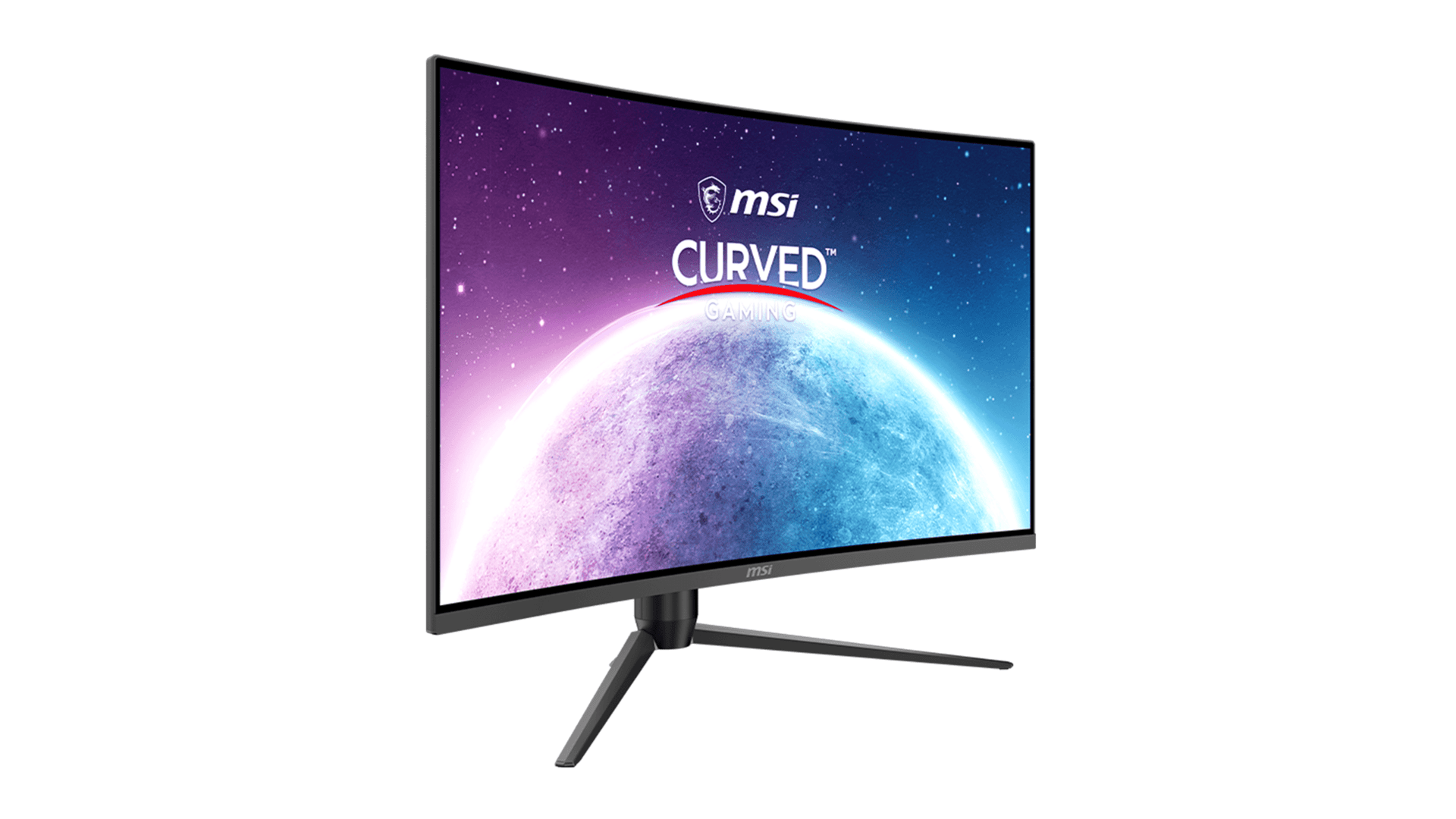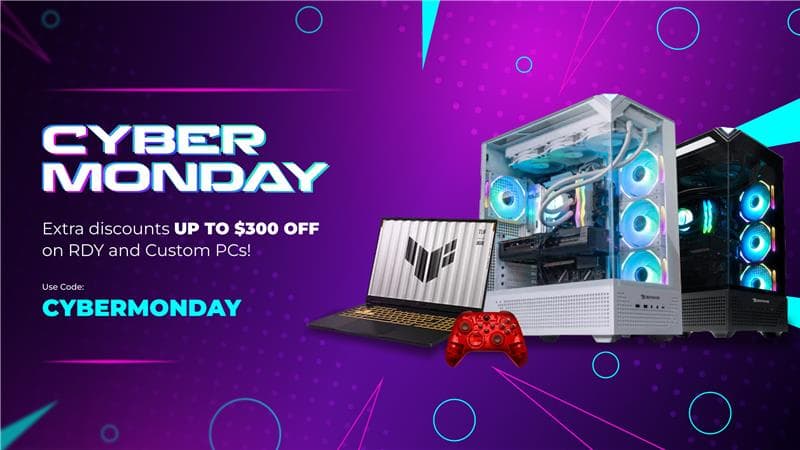Curved vs. Flat Monitor for Gaming
The quality of any gamer’s PC monitor can significantly impact their overall experience. The debate between curved vs. flat monitors in gaming can become overwhelming, especially for anyone completing their first PC build. Each monitor offers distinct advantages, catering to different preferences and needs. Curved monitors for gaming promise immersive visuals vs. flat monitors, which appeal to those who prefer a traditional design.
When choosing between flat vs. curved monitors in gaming, it’s necessary to understand the benefits and drawbacks of both types of monitors to make an informed choice. Whether you prioritize immersion, space efficiency, or cost-effectiveness, understanding the nuances of each type will guide you to the perfect monitor for your gaming adventures.
What To Look For In A Gaming Monitor
During the search for PC monitors, you should decide which type is better, a curved vs. flat monitor for your setup, based on your gaming style, setup, compatibility with other gaming gear, and budget. However, there are basic features to factor in no matter which monitor type you choose. These factors include refresh rate, resolution, and viewing angle.
- Refresh rate: A measurement reflecting how many times the monitor updates the image per second. The standard rate is 60Hz, but competitive gaming often benefits from higher rates like 144Hz.
- Resolution: This describes the number of pixels on the screen. A higher resolution value means clearer images. Standard resolution rates are 1920×1080, but 4K (3840 x 2160) offers four times more pixels.
- Viewing angle: How far you can watch the monitor at an angle without experiencing color or brightness distortion. There are two types of displays: IPS and TN. IPS displays have superior viewing angles, while TN displays typically have slightly reduced angles.
Whether choosing between a curved monitor vs. a flat monitor for gaming, the most important thing is that the monitor provides a gaming experience free of heating issues, glitches, or screen tearing.
Comparing A Curved Monitor vs. Flat For Gaming
Any gaming monitor requires considering a monitor’s refresh rate, resolution, and viewing angle. With viewing angle, knowing your preferences can influence which type of monitor you’d like, between a curved vs. flat monitor.
To make the decision easier, here are the advantages and disadvantages of a curved monitor for gaming vs. a flat one.
Curved Monitor
Deciding between a curved vs. flat monitor for gaming can be difficult, but curved monitors have many advantages. These monitors offer enhanced immersion, a wider field of view, and a more comfortable viewing experience on larger displays. They are typically preferred by those who play fast-paced games, as they can help improve reaction times. The curvature of these monitors immerses players into the game by wrapping the visuals around their field of view, creating a more engaging experience than flat monitors simply can’t match.
Curved monitors vary in curvature, measured by radius (R). The curvature rating indicates how tight the curve is, with lower numbers indicating more pronounced curves. For example, a 1500R monitor has a tighter, more noticeable curve than a 3800R monitor. Although increased curvature can enhance immersion, it can also narrow the viewing angles, so consider your typical viewing distance and angle when choosing a monitor.
PC monitors that are curved provide wider and longer screens, which is why many ultrawide monitors feature curved designs. The curvature makes these expansive displays more user-friendly and comfortable by reducing the need for extensive head movement.
However, these monitors have some drawbacks. Their larger size and curvature mean they need more desk space and are generally heavier due to the structural support necessary to maintain their shape and stability.
One significant advantage of curved monitors is their ability to support ultra-wide aspect ratios. These ratios provide a broader in-game field of view so that players can see more of the game world at once. Not all games support these ultra-wide ratios, though, causing black bars to appear on the sides of the screen.
The biggest drawback of curved monitors in gaming vs. a flat one is that they cost more. Despite their high price, the enhanced gaming experience can justify the additional expense, especially for avid gamers who prioritize immersion and comfort.
Summary of Pros
- Larger screen (ultrawide displays)
- More immersive feeling
- Better viewing experience
- Less eye strain
- Improved color consistency
Summary of Cons
- More expensive
- More bulky
- Not suitable for multi-screen setups
Flat Monitor
In the curved vs. flat monitor debate, flat monitors are a versatile choice depending on a gamer’s specific needs and preferences. One primary advantage is they’re generally cheaper compared to curved monitors. Additionally, the traditional form factor of flat monitors provides familiarity, eliminating the adjustment period that might come with transitioning to a curved screen. Their compact and space-efficient design makes them ideal for gamers with limited desk space, and they fit more naturally into multi-monitor setups, offering a seamless viewing experience across multiple screens.
Flat monitors also come in various panel types, including IPS, VA, TN, and OLED. IPS panels have faster response times, better color accuracy, and superior viewing angles, while VA panels provide deeper blacks and a wider contrast ratio. Competitive eSports players favor TN panels with their speedy response times, and OLED panels deliver ultra-crisp images and deep blacks. Flat monitors are better for wall-mounting as they sit right against the wall for wide viewing angles from various positions. These aspects of a flat monitor vs. curved monitor for gaming PCs make them ideal for gamers with limited desk space or who want a cleaner, minimalist look.
However, flat monitors come with some disadvantages. They generally offer a less immersive experience than curved monitors, which dominate the ultra-wide segment (21:9, 32:9 ratios). While flat monitors are available in ultra-wide formats, they do not provide the same level of immersiveness. Another drawback is that even though there are various panel types for flat monitors, these types also have their fair share of weaknesses. For example, while fast, TN panels do not offer the same viewing angles and color accuracy as IPS or VA panels.
Summary of Pros
- Ideal for limited desk space
- Perfect for multi-monitor setups
- Cheaper
- Lightweight
Summary of Cons
- Fewer options for ultrawide displays
- Less immersive
- It can be hard on the eyes
Choosing The Right PC Monitor For Your Gaming Setup
Choosing between a flat vs. curved monitor in gaming often comes down to personal preference. Some gamers prefer the straightforwardness and simplicity of flat monitors, while others may find the transition to or from a curved screen jarring. Both monitors offer gaming-focused features like high refresh rates, fast response times, and good color reproduction.
No matter which you choose, going with a larger monitor with higher resolutions requires a more powerful graphics card to deliver smooth gameplay, so make sure your hardware can support the monitor’s specifications. iBUYPOWER can help you get the best parts to support your monitor. If you need to upgrade your gaming PC, or want to customize your rig, visit our PC builder. You can also take a look at our best selling gaming PCs and for the best deals.







